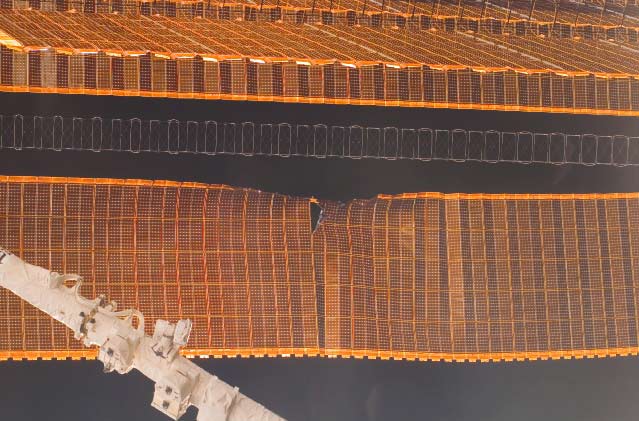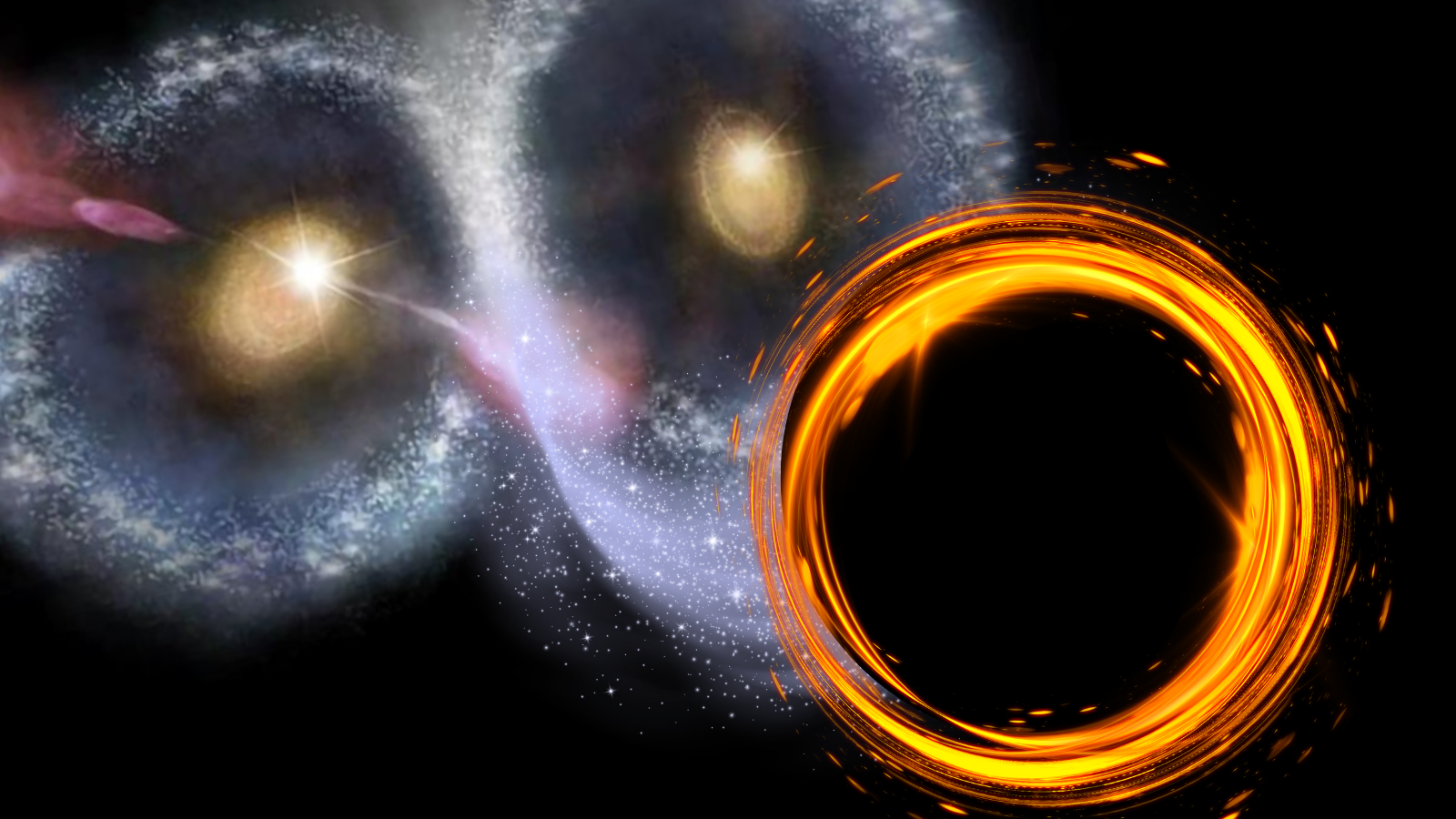NASA Reveals Plan to Fix Solar Wing

HOUSTON - NASA revealed unprecedented spacewalkingplans today that could mend a maimed solar wing at a far end of theInternational Space Station (ISS) on Saturday.
The spaceagency said astronauts will attempt to repair the working power-generating solararray, which partially tore at its hinges during deployment on Oct. 30. Mission managers indicated most details are set for the spacewalk, but gave themselves a1:08 a.m. ET (0508 GMT) deadline early Friday to ship complete instructions up to astronauts.
"We'refaced with a difficult situation," said David Wolf, head of the EVA branch for theastronaut office, here at Johnson Space Center. "I think we're onto a solution that should workand get us pretty close to a permanently acceptable situation."
Theextravehicular activity, or EVA, will send STS-120astronaut Scott Parazynski on a one-hour ride on an extended robotic arm tothe damage site while fellow astronaut Doug Wheelock looks on. Donningprotective goggles, astronauts in space worked today to craft "cufflinks" that should button up the 2.5-foot (0.76-meter) tear in the array.
IfParazynski does not effect a repair from his 90-foot-long (27-meter-long) roboticride, mission managers said spacewalkers could try again on a following day.
DerekHassmann, ISS lead flight director for the STS-120 mission, said teams arestill working around the clock to get the complete details together for thefourth spacewalk. Management teams delayedthe EVA to Saturday to buy more time.
"Weknew it would be a full-court press to get there on Friday, and I'm disappointedthat we didn't get there," Hassmann said. "But I'm satisfied we made a goodcall."
Breaking space news, the latest updates on rocket launches, skywatching events and more!
Trickychoreography
Engineerswho scrutinized solar array photographs think a piano-wire-like guide line caughton a hinge of the 4B solar array, unzipping it along the way. The solar wingwas deployed about 80 percent before astronauts on board the space stationaborted the operation.
LeadSTS-120 spacewalk officer Dina Contella said two tears--one large and onesmall--might be somehow related to the cable.
"Weknow that there's a snag there, but we're not sure ? if it's something reallyeasy to clear," Contella said, noting that Parazynski will be toting apack of tools to work with.
Whateverthe case, Parazynski will get an up-close-and-personal look at the damage?atwhich time flight controllers will huddle to decide what steps to take next.
"WhenScott is out there with his helmet cameras right at the repair (site), thatwill be our first really close look at this problem," Wolf said. "we'regoing to have to as a team ? quickly develop a plan of action."
Shockingdanger?
Hassmannsaid the EVA carries a risk of electric shock via the 110 volts coursing throughone part of the solar wing, which generates about 13.4 horsepower (that of medium-sizedbackup generator).
"Once[solar arrays] are deployed, they start producing power as they're designed todo," Hassmann said of the 110-foot (33.5-meter) sail of solar cells."There's nothing we can safe or turn off the array while it'sdeployed."
But missionmanagers noted that any extra risks they may place Parazynski under during the6.5-hour EVA will be under control.
"Ourjob is to think of all those possible ways where a bad outcome could occur ? andbe sure that every hazard is mitigated and handled," Wolf said. "Wecan come up with hazards, including electrocution--and thus we are sure that wehave mitigated that hazard within any reasonable means."
The STS-120space station construction mission launched with the space shuttle Discovery onOct. 23 and is slated to depart the space station on Nov. 5 for a Nov. 7 daylight landing. There are enough supplies on board the spacecraft to extendthe alreadyextended mission by another two days, if necessary.
- SPACE.com Video Interplayer: STS-120 Mission Profile
- NASA: Shuttle Launch Paves Way to Larger Space Station
- Complete Space Shuttle Mission Coverage
Dave Mosher is currently a public relations executive at AST SpaceMobile, which aims to bring mobile broadband internet access to the half of humanity that currently lacks it. Before joining AST SpaceMobile, he was a senior correspondent at Insider and the online director at Popular Science. He has written for several news outlets in addition to Live Science and Space.com, including: Wired.com, National Geographic News, Scientific American, Simons Foundation and Discover Magazine.
